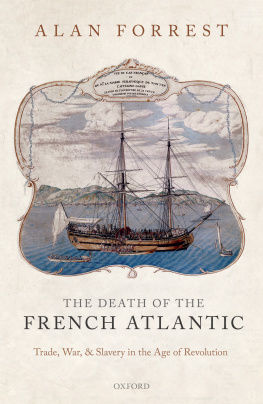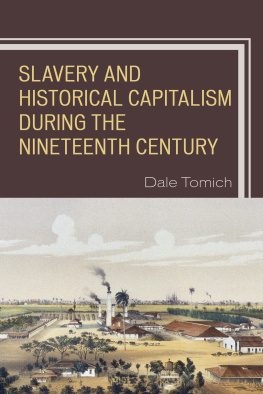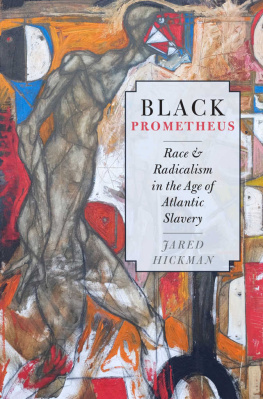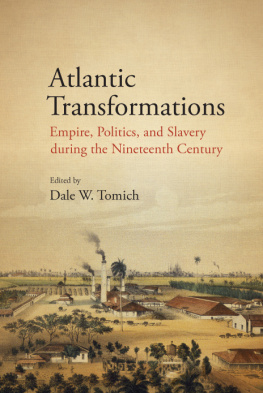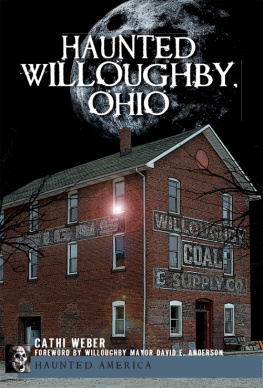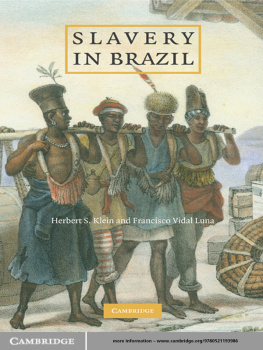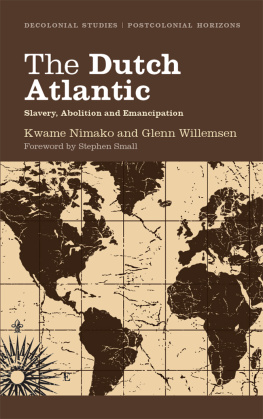Umi Willoughby - Slavery in the Atlantic World of the Eighteenth and Nineteenth Centuries
Here you can read online Umi Willoughby - Slavery in the Atlantic World of the Eighteenth and Nineteenth Centuries full text of the book (entire story) in english for free. Download pdf and epub, get meaning, cover and reviews about this ebook. year: 2020, publisher: Macmillan Higher Education, genre: Romance novel. Description of the work, (preface) as well as reviews are available. Best literature library LitArk.com created for fans of good reading and offers a wide selection of genres:
Romance novel
Science fiction
Adventure
Detective
Science
History
Home and family
Prose
Art
Politics
Computer
Non-fiction
Religion
Business
Children
Humor
Choose a favorite category and find really read worthwhile books. Enjoy immersion in the world of imagination, feel the emotions of the characters or learn something new for yourself, make an fascinating discovery.

- Book:Slavery in the Atlantic World of the Eighteenth and Nineteenth Centuries
- Author:
- Publisher:Macmillan Higher Education
- Genre:
- Year:2020
- Rating:3 / 5
- Favourites:Add to favourites
- Your mark:
- 60
- 1
- 2
- 3
- 4
- 5
Slavery in the Atlantic World of the Eighteenth and Nineteenth Centuries: summary, description and annotation
We offer to read an annotation, description, summary or preface (depends on what the author of the book "Slavery in the Atlantic World of the Eighteenth and Nineteenth Centuries" wrote himself). If you haven't found the necessary information about the book — write in the comments, we will try to find it.
Umi Willoughby: author's other books
Who wrote Slavery in the Atlantic World of the Eighteenth and Nineteenth Centuries? Find out the surname, the name of the author of the book and a list of all author's works by series.
Slavery in the Atlantic World of the Eighteenth and Nineteenth Centuries — read online for free the complete book (whole text) full work
Below is the text of the book, divided by pages. System saving the place of the last page read, allows you to conveniently read the book "Slavery in the Atlantic World of the Eighteenth and Nineteenth Centuries" online for free, without having to search again every time where you left off. Put a bookmark, and you can go to the page where you finished reading at any time.
Font size:
Interval:
Bookmark:

The front cover shows the text World History at the top, Slavery in the Atlantic World of the Eighteenth and Nineteenth Centuries, at the center, and the author's name, Urmi Engineer Willoughby, and Bedford Document Collections at the bottom.
Copyright 2021 by Bedford/St. Martins.
All rights reserved. No part of this book may be reproduced, stored in a retrieval system, or transmitted in any form or by any means, electronic, mechanical, photocopying, recording, or otherwise, except as may be permitted by law or expressly permitted in writing by the Publisher.
For information, write: Bedford/St. Martins, 75 Arlington Street, Boston, MA 02116.
ISBN 978-1-319-37822-6 (ePub)

Bedford Document Collections
Urmi Engineer Willoughby
How did the growth of the Atlantic slave trade and slave societies in the Americas affect Africans and their descendants?
In this unit you will learn about the history of slavery in the Atlantic World, with an emphasis on the experiences of enslaved people. You will analyze primary sources that expose the perspectives of slavers, slaveholders, and abolitionists. Together, these documents provide insight into the lived experiences of enslaved people, in terms of their labor, living conditions, health, and family life. They reveal the horrors of slavery, the experiences of slaves in Africa and the Americas, and the agency of enslaved people. Slave narratives in particular highlight the diverse experiences of slaves, including the perspectives of men and women in diverse historical and geographical contexts. The geographical scope covered in the sources provides the opportunity for you to compare and contrast the experiences of enslaved peoples in Africa, the Caribbean, and the United States.
This module focuses on African slavery and abolition in the Atlantic World during the height of the slave trade in the eighteenth and nineteenth centuries. Europeans began purchasing and transporting enslaved Africans to the Americas early in the sixteenth century. Early European efforts to enslave Native Americans failed due to disease, warfare, and depopulation, and Europeans soon turned to Africa as a source of unfree labor. By the seventeenth century, Europeans established slave labor plantations throughout the Caribbean and mainland of the Americas. Plantations profited by producing large quantities of crops for export rather than for local consumption. These cash crops included sugar, tobacco, indigo, rice, and cotton.
As demand for African slaves increased, slavers and kidnappers increasingly threatened African communities. Most captured Africans endured a long journey within Africa before they reached the coast, from where they departed for the Americas. The voyage to the Americas, known as the Middle Passage, could take two or three months. Most captives arrived in the Caribbean and Brazil, and then endured a series of forced relocations as slavers and planters bought and sold them.
In the Americas, enslaved people worked on plantations, in mines, and in various occupations in cities and on ships. They had diverse experiences, which varied based on their age, sex, gender, ethnicity, health, abilities, and other criteria. Enslaved people frequently endured abuses and inhumane treatment, worked excessively in laborious jobs, and lived in unsanitary conditions. In much of the Atlantic World, the legal status of slaves as property or chattel denied them basic human rights. While some enslaved people were able to earn money to save and potentially buy their freedom, most did not have this option.
Enslaved individuals who did not have any means of legally acquiring their freedom resisted their conditions in various ways, for example by preserving cultural traditions, organizing rebellions, running away, or committing suicide. In cities and towns across the Atlantic, nineteenth-century newspapers contained numerous advertisements regarding slaves. Slave owners were especially concerned about fugitvism, in which the enslaved managed to escape from their owners. Slave owners policing and punishing of runaway slaves increased after the British ban on the slave trade in 1807. Individuals who had been enslaved but gained their freedom, either by running away, purchasing their release, or being manumitted by their owners, were integral to the rise of the abolition movement. The genre of slave narratives, or autobiographies, brought the brutality of slavery into public discourse.
Despite the success of the abolition movement in legally abolishing the trans-Atlantic slave trade, the institution of slavery continued and grew as the dominant form of plantation labor throughout the Atlantic World in the nineteenth century. Enslaved Africans were shipped illicitly to the Americas, and slavers continued to buy and sell people of color legally in domestic slave markets. Challenges to slavery, in the form of slave rebellions, resistance, and abolitionist activism increased over the course of the nineteenth century. Simultaneously, ideas about racial difference and racism grew among scientists and doctors in the United States and Europe. Although the legal institution of slavery was gradually abolished in the Americas in the late nineteenth century, it often was replaced by similar systems of racialized forced labor, such as the convict lease system.
| TIMELINE | |
| 1492 | Columbian voyages bring the first enslaved Africans to the Americas. |
| 1500 | Enslaved Africans arrive in Portuguese Brazil. |
| 1619 | Enslaved Africans arrive in English Virginia colony. |
| 1640 | Growth of slave labor plantations in Brazil and the Caribbean |
| 1719 | Enslaved Africans arrive in French Louisiana. |
| 1750 | Virginia law defines all slaves as property. |
| 1789 | French Revolution |
| 1790 | Peak of Atlantic slave trade (60,000 enslaved Africans transported to Americas per year) |
| 1791 | Haitian Revolution and abolition of slavery in Haiti |
| 1803 | Denmark abolishes the slave trade. |
| 1807 | Britain abolishes the slave trade. |
| 1833 | Slavery is abolished in the British colonies. |
| 1850 | Fugitive Slave Act is passed in the United States. |
| 1854 | Slavery is abolished in Peru and Venezuela. |
| 1865 | Slavery is abolished in the United States. |
| 1886 | Slavery is abolished in Cuba. |
| 1888 | Slavery is abolished in Brazil. |
Olaudah Equiano was born in 1745 in a West African village called Assaka, in present-day Nigeria. His family was of Igbo ethnicity. As he narrates in his autobiography, excerpted below, he was kidnapped and enslaved when he was eleven years old. Equiano describes several owners who bought and sold him before he arrived on the African coast, where he was forced onto a British slave ship headed across the Atlantic. Upon arriving in Bridgetown, Barbados, Equiano was again forced to travel, this time to Virginia, where he worked on a plantation. Eventually, he was able to leave Virginia; a British Royal Navy officer bought him, and Equiano worked as an enslaved naval servant. He learned English and gained valuable expertise in maritime travel. He converted to Christianity and was baptized in 1759 in England. While working on British ships, Equiano bought and sold goods (such as limes and oranges) and eventually saved enough money to purchase his freedom in 1766. He became interested in ending slavery and was actively involved in the abolitionist movement in Britain. His autobiographical narrative was a best-seller in England, and it was translated into German and Dutch. He died in 1797 in London.
Font size:
Interval:
Bookmark:
Similar books «Slavery in the Atlantic World of the Eighteenth and Nineteenth Centuries»
Look at similar books to Slavery in the Atlantic World of the Eighteenth and Nineteenth Centuries. We have selected literature similar in name and meaning in the hope of providing readers with more options to find new, interesting, not yet read works.
Discussion, reviews of the book Slavery in the Atlantic World of the Eighteenth and Nineteenth Centuries and just readers' own opinions. Leave your comments, write what you think about the work, its meaning or the main characters. Specify what exactly you liked and what you didn't like, and why you think so.

